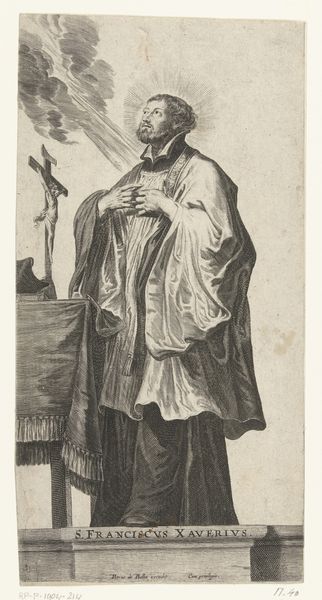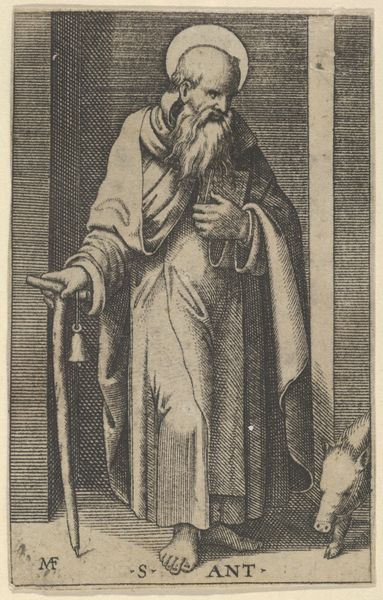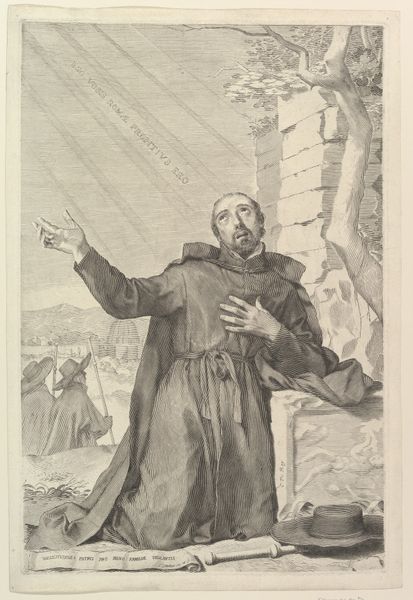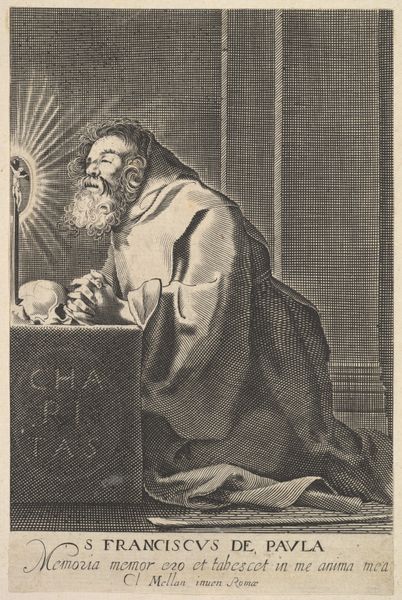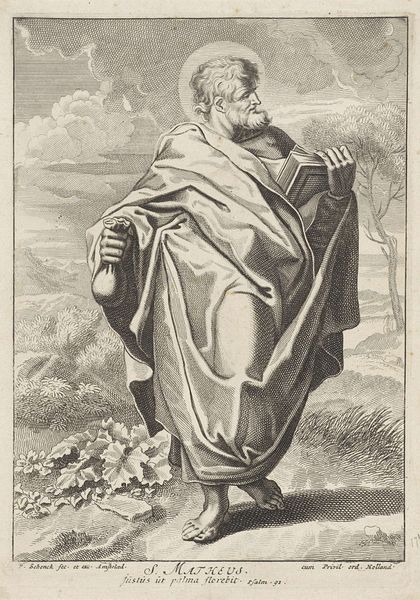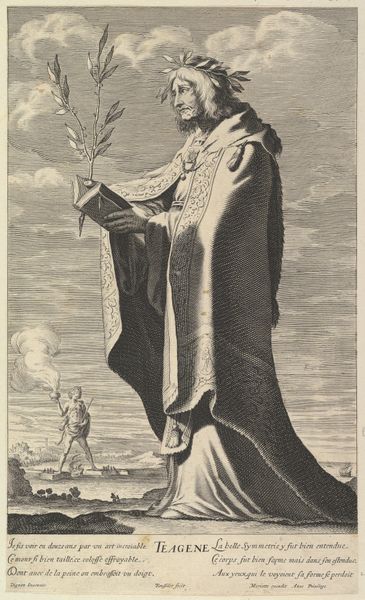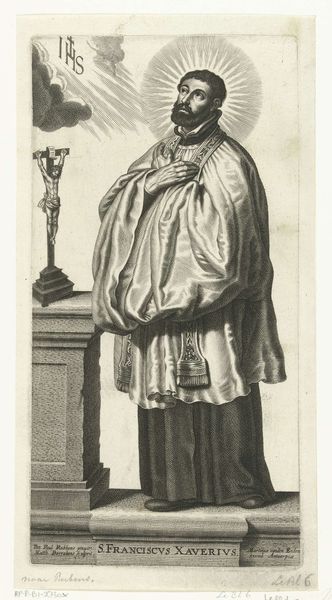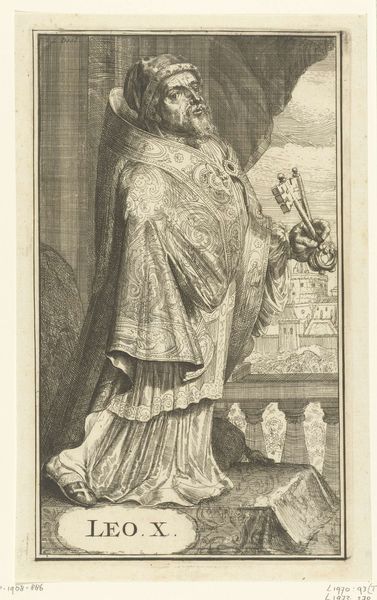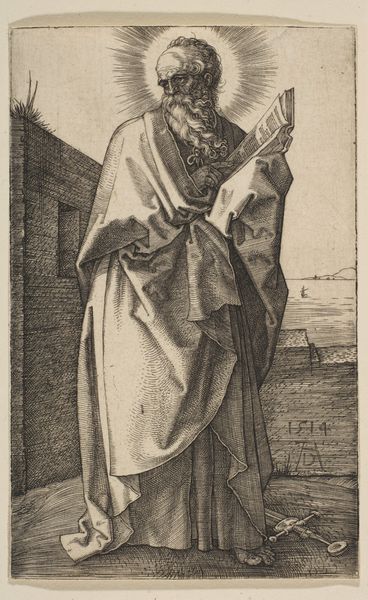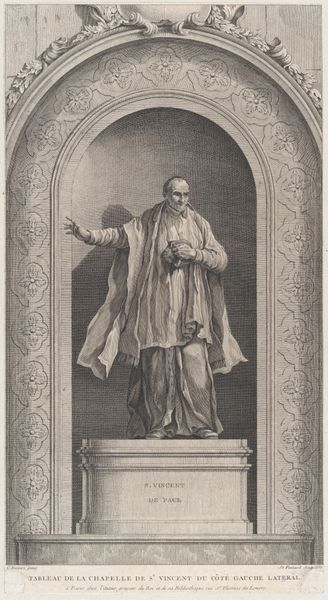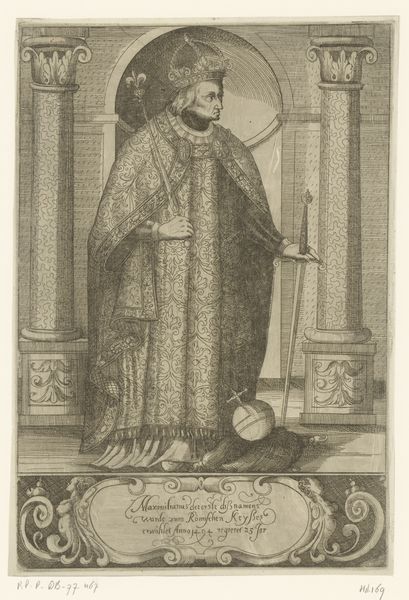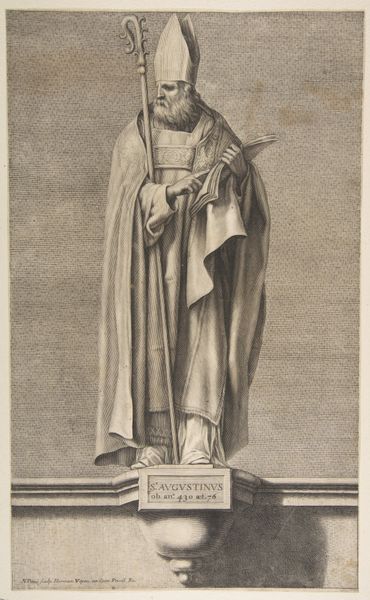
engraving
#
portrait
#
baroque
#
history-painting
#
engraving
Dimensions: height 384 mm, width 246 mm
Copyright: Rijks Museum: Open Domain
Curator: Here we have Gilles Rousselet’s engraving, “Heilige Augustinus,” dating back to sometime between 1620 and 1686. Editor: The immediate impression is… lofty. Augustine’s gaze ascends, mirroring the steep diagonal rise of the background elements. The engraving has this quality of upward striving. Curator: Indeed, the Baroque period very much shaped these sorts of iconic images. Look closely at the textural variations Rousselet achieves simply through line—the billowing folds of Augustine’s robes against the rough hewn texture of the architecture on the right. The hatching indicates a desire to illustrate dynamism and movement in an otherwise static composition. Editor: And what about the positioning of Augustine himself? Doesn’t he seem posed at a precise point between earthly and divine concerns? The small figures at the lower left beside the seashore underscore his detachment from the material world even as his feet firmly remain planted on solid ground. This deliberate tension speaks to Augustine's spiritual role during a tumultuous period in the Church’s evolution. Curator: He occupies a carefully constructed symbolic space, doesn’t he? Augustine literally mediates the divide. We can read it formalistically. The subject embodies the intersection between worldly solidity and the possibility of transcendence. Editor: The way the print showcases the institutional power and ideological aspirations of the Church is quite palpable. In times of social upheaval, visual messaging matters and every artistic element works together to achieve propaganda goals. Curator: So you’re saying the Baroque’s emphasis on splendor served to bolster the Church’s presence amidst shifts in authority. Editor: Exactly! What appears ornamental to one viewer functions as strategic political communication for another. This helps one appreciate why certain stylistic vocabularies rose to prominence when they did. Curator: Well, that shifts my perspective; I am now more aware of the artist making such explicit choices for his socio-cultural context. Thank you for your thoughts on it! Editor: My pleasure; looking at the work, I understand better how individuals in a period interpreted images and also tried to make images speak.
Comments
No comments
Be the first to comment and join the conversation on the ultimate creative platform.
